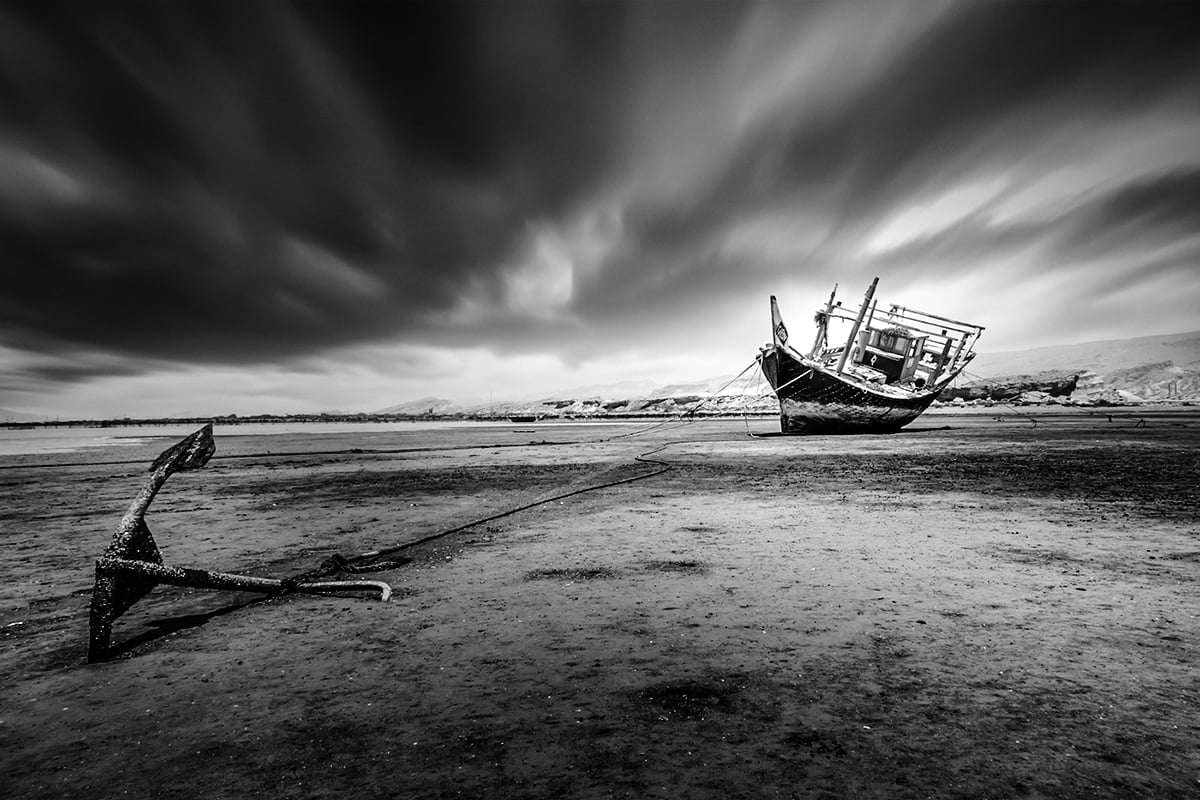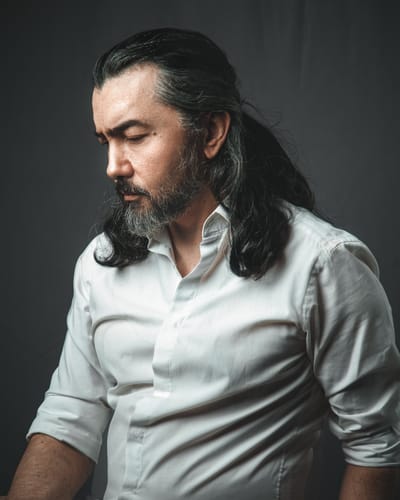Interminable
0.300 ETH
$NaN
Lot # 31
Blockchain token number
Fine_Art
High_Dynamic_Range
Landscape
Long_Exposure


Creator

Artist

Promotion Packages
Story
ONCE UPON A TIME... LIFE COLLECTION talk with Shahram Jahansooz, on the opening of the “Once Upon a Life …” photography exhibition at the Shalman Gallery and more
I was searching for concepts such as solitude
Shahram Jahansooz, a graduate of photography and a member of several photography institutes and associations such as the Iranian Photography Center, French International Federation of Photographic Art, Germany’s GNS international association and the International Association of Press Photography (IAPP), started his professional career as a cinema and television photographer and has had many photography exhibitions in and outside of Iran. Shahram Jahansooz has started a photography exhibition in Shalman Gallery, and this gave us an excuse to have a talk with him.
These boats were in motion since they were first made, but this movement has become less and less as the years passed to the point that they have become completely stagnant and abandoned. The feeling of motion of the clouds, which can be seen more vividly in one of the photographs taken with long exposure, could probably be used to show that this motion and dynamics of the clouds represent life itself as being in motion.
How much has your previous experience helped in the creation of this collection, considering the fact that your previous work was related to cinema and nature?
I think that cinematic look and my experience in cinematic photography, have deeply affected this collection. The choosing of the subjects, the angles and the framing have therefore been somewhat more cinematic and this collection could be seen as a cinematic view of nature.
This collection is not solely a documentary or a report. In other words, these boats have a hidden meaning behind them and could refer to other thing and tell a story of their own, wouldn’t you agree?
Yes, you’re absolutely right. I don’t see these photographs as nature photography but as conceptual and fine arts. This collection is in no way a documentary and these boats could be a representation of us humans and how in certain point in their lives they’re stuck between life and death, in a point where they exist but in a way they don’t. The boats are no longer useful and they’re not used and are therefore no longer sought after. This can also be seen among humans. Objects might have souls and feel the same way as us when abandoned. These boats still stand tall but the feeling of death and uselessness can be seen clearly in photographs.
Tell us a little about the theme of the present gallery and the creation of the idea behind it.
As for the idea behind this gallery, I have to say that I didn’t want to just take photographs of nature and document a piece of nature. I wanted the current collection to be of nature in a way that could also give a message and have a story in itself. In a trip I had in Qeshm,I spent a week searching in the island looking at nature and for ideas and think about them. It was during this exploration that this collection was finally created. I saw these boats while I was wondering about the island and felt that this could be a really good subject if the photographs are taken right and the concept behind them could be portrayed properly. The concept I had in mind was the concept of loneliness, retirement and ineptness. The ineptness in these photographs could probably show a sense of loneliness which could also be true about us humans, for as where we once were capable of many things, but as we lost those abilities, we too were abandoned and became forlorn.
In all of the photographs the boats are motionless and abandoned and nothing is not shown to have any motion or movement other than the clouds. Please tell us more about this stagnation and idleness that is more noticeable in the photographs.
These boats were in motion since they were first made, but this movement has become less and less as the years passed to the point that they have become completely stagnant and abandoned. The feeling of motion of the clouds, which can be seen more vividly in one of the photographs taken with long exposure, could probably be used to show that this motion and dynamics of the clouds represent life itself as being in motion. The motionlessness of the boats and the arid land at the bottom of the photographs represent their death. These photographs could show that life goes on and continues, whereas these boats have reached their end and they have slowly become so motionless that they have reached death.
One thing that these photographs have all in common is that they are all in black and white with a horizontal frame. Tell us why you made these choices and how they helped you convey the sense, content and idea that you were aiming for.
The horizontal framing is probably from my cinematic point of view because I wanted to convey my idea using a wide space and scene so that it would cover all of the subjects and tell the story better. The setting of other objects and elements in the horizontal frame is in a way that leads the viewers towards the boats. I got rid of the element of color because colors can make a photograph really appealing and I didn’t wish the photographs to be seen with the beauty of colors. I wanted them to be without any color and to use the spectrum of gray and the neutral black and white to give the message of stagnation and death.
The naming of the gallery as “Once Upon a Life…” leads the audience towards what they can expect to see in the gallery and probably lets them know of the tale like theme of the gallery; meaning that they can anticipate what they’re about to see in the gallery. Tell us about the choosing of this name and its relation to the art pieces.
This name was chosen because all of these boats had a life once, were once very appreciated and were once very valuable. They were perhaps the source of income of many families and are now dumped as worthless object in the middle of the desert. These boats once had movement, motion and life. Perhaps a life in the sea had been a life full of ups and downs for them and are now forsaken and their owners may never use them again. I thought that the name “Once Upon a Life…” would be very meaningful and effective for this image and could be the overall story of these boats and be really fascinating for the audience. I can say that I have told the story of boats that once upon a time had a life.
You have experienced a place that has always been the focal point of artist and the origin of many works of art and literature. Tell us about your experience there and the connection you made with the island.
Perhaps one of the reasons that the island of Qeshm has always been fascinating for me is the fact that I lived in United Arab Emirates for many years and everything there was modern and new. Obviously the concept of land and sea is also there but we don’t see nature like this. Perhaps because I grew up in a place full of buildings, highways and man-made things, I really enjoyed the pristine nature when I went to Qeshm and I experienced it first-hand. It was really captivating and charming for me. Qeshm was a place full of original and untouched subjects. Qeshm has really nice people and is beautiful. This definitely won’t be my last trip to Qeshm and I will probably go there again next year. I’m going there because I know I will find more topics and subjects there which I can work on in the future.